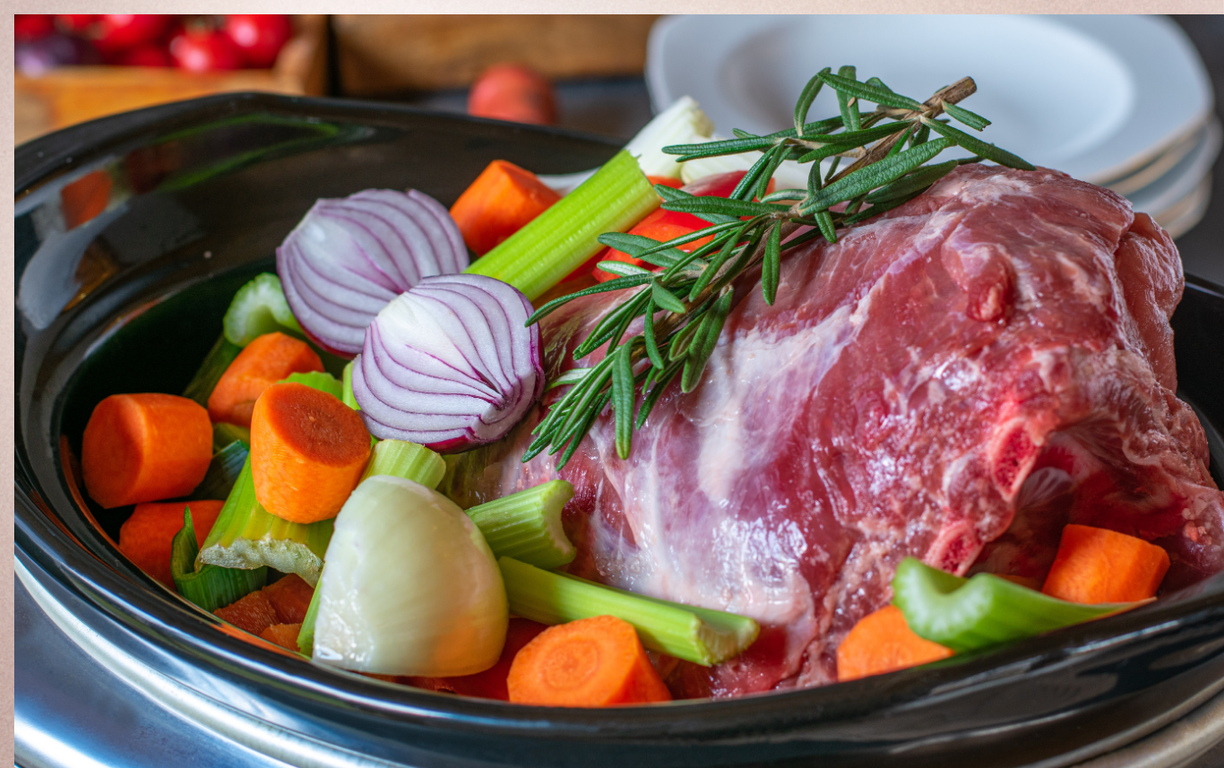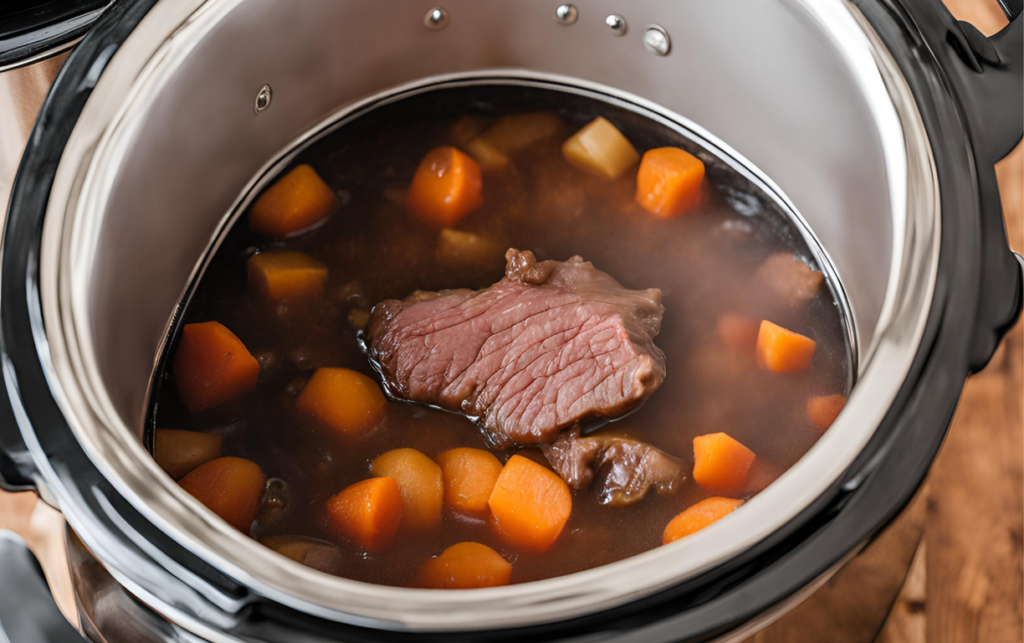Physical Address
304 North Cardinal St.
Dorchester Center, MA 02124
Physical Address
304 North Cardinal St.
Dorchester Center, MA 02124


If you’re new to slow cooking, you might wonder about the best way to prepare your meals. One common question is whether you can toss raw food directly into your slow cooker. The answer might surprise you, as this method can save time and enhance flavors in your dishes.
Using raw ingredients in a slow cooker allows for a unique cooking process that melds flavors over several hours. It’s a fantastic way to create hearty meals with minimal effort. However, there are some important tips to consider for safety and optimal taste. Let’s dive into the details of slow cooking with raw food and discover how to make the most of this convenient cooking method.
Raw food refers to unprocessed ingredients consumed in their natural state. Cooking with raw food in a slow cooker combines the health benefits of raw ingredients with the convenience of long, low-temperature cooking.
Raw food consists of uncooked, unprocessed ingredients. Common examples include fresh fruits, vegetables, nuts, seeds, and sprouted grains. This dietary approach emphasizes natural flavors and nutrients. When using raw food in cooking, it’s important to source high-quality ingredients to maximize the nutritional benefits.
Slow cookers, or crockpots, utilize low, steady heat to cook food over several hours. They’re designed to simmer ingredients gently, enhancing flavors while preserving moisture. Using a slow cooker simplifies meal preparation, allowing you to combine raw food and liquids quickly. This method produces tender and flavorful dishes, making slow cookers ideal for busy lifestyles.
Prioritizing safety is crucial when using raw food in a slow cooker. Understanding the risks and following best practices ensures a safe cooking experience.
Cooking raw food in a slow cooker presents several risks. Bacterial growth occurs between 40°F and 140°F, known as the “danger zone.” If food doesn’t reach 165°F within a specific timeframe, bacteria can proliferate, leading to foodborne illnesses. Improperly prepared raw animal products, like poultry and meat, are particularly prone to contamination if not cooked thoroughly. Whole grains and legumes also require proper cooking to neutralize anti-nutrients and toxins.
Adopting best practices enhances food safety while using raw ingredients.
Cooking raw food in slow cookers offers several advantages, enhancing meals’ flavor and nutrition while simplifying your cooking process. Here are key benefits to consider.
Cooking raw food in a slow cooker allows flavors to develop gradually. The low, steady heat encourages the fusion of spices and ingredients, resulting in rich, intricate flavors. You can layer ingredients thoughtfully to create a depth of taste. Additionally, the moisture retained during cooking prevents ingredients from drying out, making each bite juicy and flavorful. For example, combining meat with herbs and vegetables results in a flavorful broth that enhances the entire dish.
Slow cooking optimizes the nutritional value of raw food. The gentle heat helps maintain vitamins and minerals that can be lost in high-temperature cooking methods. For instance, cooking vegetables at lower temperatures minimizes nutrient loss, while proteins retain more of their essential amino acids. Utilizing the slow cooking method with whole, unprocessed ingredients ensures you’re consuming a wholesome meal packed with nutrients. This approach can lead to healthier eating habits, aligned with your nutritional goals.
Using raw ingredients in a slow cooker involves specific techniques and considerations to achieve optimal results. Knowledge of the right ingredients and appropriate cooking times enhances flavor and maintains nutritional benefits.
Choose robust vegetables like carrots, potatoes, and onions, as they withstand prolonged cooking. Incorporate lean proteins such as chicken, beef, or legumes, ensuring they reach safe internal temperatures. Include whole grains, like quinoa or brown rice, which absorb liquids and enhance texture. Always consider adding herbs and spices to enhance flavors, as they develop richness during slow cooking.
Adjust cooking times based on ingredient types and sizes. Generally, denser vegetables require longer cooking durations of 6-8 hours on low heat. Lean meats can become tender in 4-6 hours on low heat. For grains, typically 3-4 hours on low is sufficient. If you opt for quicker-cooking ingredients, like leafy greens, add them within the last 30 minutes to prevent overcooking. Use these time frames to ensure all ingredients cook thoroughly and safely.
Using raw food in a slow cooker can transform your meal prep experience. You can enjoy the convenience of hearty meals while maximizing flavor and nutrition. Just remember to prioritize safety by following best practices to prevent any foodborne illnesses.
By selecting the right ingredients and adjusting cooking times, you can create delicious dishes that suit your taste and dietary needs. Embrace the ease of slow cooking and explore the endless possibilities that raw food brings to your table. With the right approach, you’ll find that slow cooking with raw ingredients is not only safe but also incredibly rewarding.

Using raw ingredients in a slow cooker can save time and enhance flavors. The gentle cooking process allows for the development of rich, intricate tastes while preserving moisture. Additionally, this method retains more nutrients compared to higher temperature cooking, making it a healthier option for meal preparation.
A slow cooker utilizes low, steady heat to gently simmer ingredients over several hours. This method promotes even cooking, enhances flavors, and keeps food moist, making it ideal for busy lifestyles needing convenient meal solutions.
To ensure safety, always preheat your slow cooker, layer ingredients properly, use a food thermometer to check internal temperatures, and avoid lifting the lid during cooking. Cook raw animal products to at least 165°F to prevent foodborne illnesses.
Cooking times vary based on the type of ingredient. Typically, denser vegetables take 6-8 hours on low heat, lean meats need about 4-6 hours, and grains usually require 3-4 hours. Leafy greens should be added in the last 30 minutes to avoid overcooking.
Yes! Slow cooking preserves vitamins and minerals that are often lost in high-temperature cooking methods. The low heat allows for a gentler cooking process, maximizing the nutritional value of raw foods, and promoting healthier eating habits.